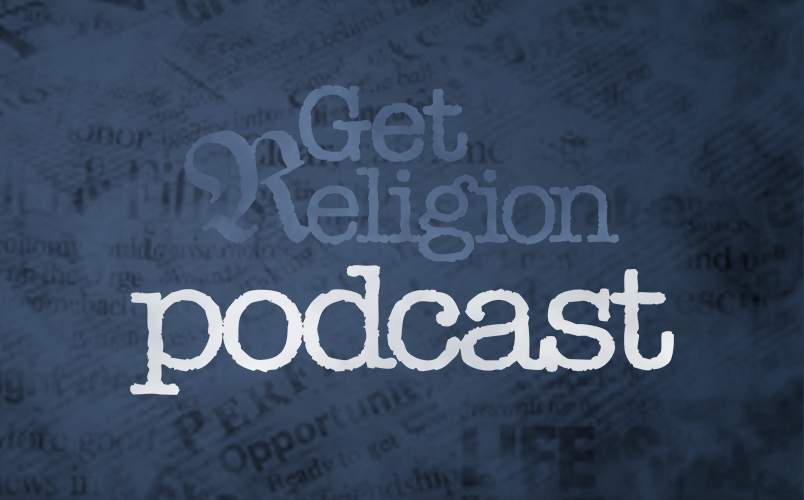This week’s “Crossroads” feature post is brought to you by the letter “A,” as in “Atlantic ocean.”
In other words, I am writing this while looking out a window at the Atlantic Ocean. I think this week’s podcast introduction will be a bit shorter than normal.
Oh, the podcast is the normal length (click here to tune that in) and it focuses on reports about an investigation into the basic facts of the Covington Catholic High School media storm. Here’s my previous post on that topic: “Private investigators: Confused Covington Catholics didn’t shout ‘build the wall’ or act like racists.”
The main subject that host Todd Wilken and I discussed was the lessons that two groups of people — journalists and church leaders — could learn from that encounter between a bunch of Catholic boys, a circle of black Hebrew Israelites and Native American activist Nathan Phillips.
I hope that everyone learned to be a bit more patient when considering “hot take” responses to short, edited YouTube videos prepared by activist groups. That includes Catholic bishops, if and when they face withering waves of telephone calls from reporters (and perhaps other church leaders).
We may have a new reality here: When news events take place and lots of people are present, journalists (and bishops) can assume that there will be more than one smartphone video to study.
The stakes for journalists (and perhaps a few Hollywood pros) could be high. Consider this passage from my earlier post, focusing on What. Comes. Next.
… There’s an outside shot that legal scholars may be involved in future accounts of all this, depending on how judges and, maybe, some juries feel about journalists basing wall-to-wall coverage on short, edited videos provided by activists on one side of a complex news event. In the smartphone age, do journalists have a legal obligation — in terms of making a professional attempt to check basic facts — to compare an advocacy group’s punchy, edited YouTube offering with full-length videos from others?
Before someone asks: I feel exactly the same way about covert videos (think Planned Parenthood stings) by “conservative” activists. Nobody knows anything until the full videos are available to the press.
So, are journalists pausing to think about what happened in this Twitter-fueled train wreck of a story?
I have my doubts that the repentance is widespread. Take, for example, the following passage from the New York Times story about the just-released investigation into the actions of the Covington kids.
Want for the #BLOL moment at the end of this. I do not know if #BLOL — bitter laugh out loud — but it should be.
Covington Catholic High School and the diocese, along with a chorus of political commentators, had at first condemned the behavior of the students after a short clip spread rapidly on social media that showed an apparent standoff between Mr. Phillips and an unidentified teenager in a MAGA hat. The diocese even said the students could face expulsion.
But within a day, longer videos began to circulate that showed a more complicated scene at the memorial, and supporters of President Trump rallied to their side.
Wait a minute. Who was in the chorus of digital voices that rushed to embrace the Phillips take on these events that assumed the students chanted “build the wall” and other nasty things? Who suggested that these Catholic boys deserved condemnation (if not a punch in the face of smiling boy)? I seem to remember journalists and other media stars diving into that scrum, not just “political commentators.”
Then there is the #BLOL moment: It was “Trump supporters,” alone, who spoke out in support of these kids, when the full videos emerged? The outrage was that slanted and narrow? #REALLY
How about this fierce piece, by the always complex voice of Andrew Sullivan (no Trump man) in New York magazine. The headline: “The Abyss of Hate Versus Hate.”
Yes, the boys did chant some school riffs; I’m sure some of those joining in the Native American drumming and chanting were doing it partly in mockery, but others may have just been rolling with it. Yes, they should not have been wearing MAGA hats to a pro-life march. They aren’t angels; they’re teenage boys. But they were also subjected for quite a while to a racist, anti-Catholic, homophobic tirade on a loudspeaker, which would be more than most of us urbanites could bear — and they’re adolescents literally off the bus from Kentucky. I heard no slurs back. They stayed there because they were waiting for a bus, not to intimidate anyone.
To put it bluntly: They were 16-year-olds subjected to verbal racist assault by grown men; and then the kids were accused of being bigots. It just beggars belief that the same liberals who fret about “micro-aggressions” for 20-somethings were able to see 16-year-olds absorbing the worst racist garbage from religious bigots … and then express the desire to punch the kids in the face.
How did this grotesque inversion of the truth become the central narrative for what seemed to be the entire class of elite journalists on Twitter? That’s the somewhat terrifying question.
Now, what happens if that Sullivan question ends up in a courtroom during summary remarks to a jury in, oh, Kentucky?
Just asking.
Enjoy the podcast. As for me, it’s time for another walk on the beach.










